For those eager to embrace electric biking without straining their finances, Inexpensive E Bikes present the perfect solution. These budget electric bikes open up the world of e-biking to a wider audience, proving that you don’t need to spend a fortune to enjoy the benefits of an electric bicycle. We’ve rigorously tested a variety of models, focusing on crucial aspects like ride comfort, adjustability, battery longevity, and hill-climbing capability to bring you the best recommendations.
Inexpensive e bikes serve as an excellent entry point into the e-bike realm. With top-tier electric bikes often priced in the thousands of dollars, exploring a more affordable option initially is a smart move to get acquainted with the e-biking experience.
After extensive road testing, we’ve concluded that the Ride1Up Turris stands out as the best inexpensive e bike overall. Its comfortable ride and robust pedal assist make it a winner.
Similarly, the Ride1Up Roadster V3 impressed us with its feature-rich design, all for under $1,300. However, the market offers a diverse range of budget electric bikes tailored to different needs, whether it’s leisurely city cruising, tackling long distances, or navigating busy commutes.
Quick Picks: Inexpensive E Bikes at a Glance
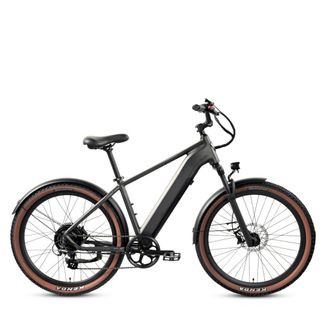 Ride1Up Turris Best Overall Inexpensive E Bike: Ride1Up Turris
Ride1Up Turris Best Overall Inexpensive E Bike: Ride1Up Turris
A potent 750-Watt rear hub motor empowers this e-bike to conquer steeper hills compared to competitors, coupled with a remarkably comfortable riding experience.
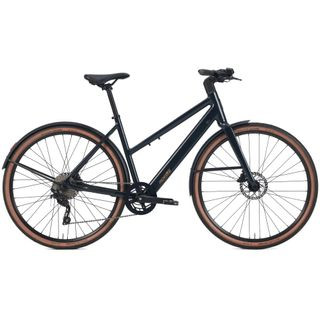 Ride1Up Roadster V3 Best Inexpensive E Bike for Commuting: Ride1Up Roadster v3
Ride1Up Roadster V3 Best Inexpensive E Bike for Commuting: Ride1Up Roadster v3
This lightweight and stylish e-bike boasts an understated aesthetic while delivering a brisk ride, perfect for urban commutes.
 Wing Freedom 2 Most Comfortable Inexpensive E Bike: Wing Freedom 2
Wing Freedom 2 Most Comfortable Inexpensive E Bike: Wing Freedom 2
This e-bike discreetly integrates Apple FindMy technology, ensuring you can locate your bike if it’s ever stolen. Plus, a built-in alarm acts as a theft deterrent.
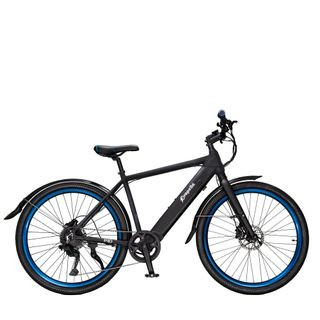 Propella 9S Pro V2 Best Adjustable Inexpensive E Bike: Propella 9S Pro V2
Propella 9S Pro V2 Best Adjustable Inexpensive E Bike: Propella 9S Pro V2
Featuring adjustable handlebars, this model accommodates riders of various heights more readily than many other e-bikes. It also offers a host of impressive features for its price point.
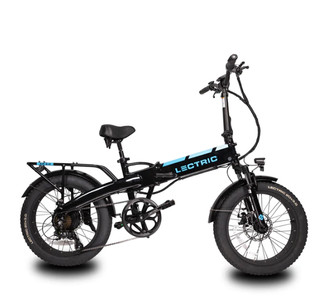 Lectric XP 3.0 Best Inexpensive Folding E Bike: Lectric XP 3.0
Lectric XP 3.0 Best Inexpensive Folding E Bike: Lectric XP 3.0
If you need an e-bike that stows away easily, this folding model is ideal. Its robust, fat tires and excellent battery capacity empower you to explore virtually anywhere.
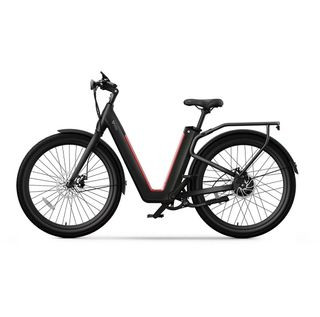 NIU Electric Bike BQi-C3 Pro NA-Black Best Inexpensive E Bike for Long Range: NIU BQi-C3 Pro
NIU Electric Bike BQi-C3 Pro NA-Black Best Inexpensive E Bike for Long Range: NIU BQi-C3 Pro
This budget-friendly e-bike incorporates dual batteries within its frame, providing an exceptional 90-mile range. It’s a heavier option, but delivers a truly enjoyable ride, even over extended distances.
Top Inexpensive E Bikes Available Now
Best Overall Inexpensive E Bike
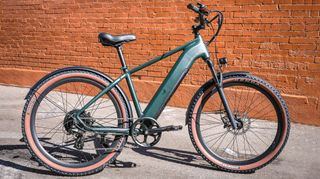 Ride1Up Turris inexpensive e bike leaning against a brick wall
Ride1Up Turris inexpensive e bike leaning against a brick wall
(Image credit: Tom’s Guide)
1. Ride1Up Turris
An inexpensive electric bike that excels in all key areas.
Our detailed review:
Key Specs
Battery: 48V, 12.8Ah Reention Prism with LG cells
Estimated Range: 25-45 miles
Maximum Assisted Speed: 28mph
Motor: 750-watt, 48V Shengyi geared hub motor, 60Nm torque
Gearing: Shimano 7-speed, 11-32 cassette and 44T chainring
Weight: 55 pounds
Reasons to Purchase
- Powerful pedal assist
- Excellent value for money
- Comfortable riding experience
Drawbacks
- Suspension fork may be unnecessary
The Ride1Up Turris definitively proves that a quality e-bike doesn’t need to be expensive or overly sophisticated to be outstanding. The Turris’s 750W motor performed beyond expectations, delivering ample power for diverse riding scenarios. Particularly impressive was the motor’s swift engagement upon pedaling, although throttle-only usage exhibited a slight delay.
We also appreciated its aesthetic appeal, reliable mechanical disc brakes, and user-friendly digital display. Adding to its value are the bright 60 Lux headlight, front and rear fenders, adjustable kickstand, and wide 27.5 x 2.4-inch tires. While it lacks a taillight, our recommendations for the best bike lights can easily address this.
Unlike higher-priced counterparts, the Turris requires some assembly, including handlebar, front wheel, and pedal attachment, along with fender adjustments. This might necessitate a visit to a local bike shop for those less comfortable with bike assembly. Furthermore, we felt the front suspension fork seemed somewhat redundant on this model.
However, for individuals seeking an affordable electric bike for urban commuting and general city riding, the Turris should undoubtedly be a top contender. It balances cost-effectiveness with performance remarkably well, making it a leading choice in the inexpensive e bike category.
Best Inexpensive E Bike for Commuters
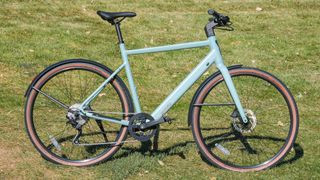 Ride1Up Roadster V3 inexpensive e bike parked on green grass in sunlight
Ride1Up Roadster V3 inexpensive e bike parked on green grass in sunlight
(Image credit: Dan Cavallari)
2. Ride1Up Roadster V3
The premier inexpensive electric bike for daily commuting.
Our expert analysis:
Key Specs
Battery: Removable Samsung GB50, 10Ah
Estimated Range: 20-40 miles
Maximum Assisted Speed: 28mph
Motor: 500-watt Mivice hub motor, 50Nm torque
Gearing: 44T chainring
Weight: 39 pounds
Reasons to Purchase
- Quick, enjoyable, and responsive steering
- Solidly constructed feel
- Resembles a traditional bicycle
- Torque sensor for intuitive assist
Drawbacks
- Not ideal for cargo transport
The Ride1Up Roadster V3 is the successor to the popular Roadster V2, a long-standing favorite among budget electric bikes. Fortunately, the V3 is a worthwhile upgrade, enhancing both rideability and enjoyment.
While slightly heavier than the V2 (39 lbs vs. 33 lbs), the V3 achieves a higher assisted top speed (28mph vs. 24mph) and extended range (40 miles vs. 30 miles). The V3 also comes with a $200 price increase, but the performance enhancements justify the additional cost.
Like its predecessor, the Roadster V3 excels as a commuting e-bike. Its design even more closely mirrors traditional commuter bikes commonly seen in office parking areas nationwide. This makes it an unassuming yet highly functional inexpensive e bike.
The robust handling facilitated easy maneuvering in tight spaces, and the motor swiftly accelerates you, aided by the pedal-based torque sensor that adjusts assistance based on your pedaling input. This torque sensor is a feature often found in higher-end e-bikes, making its inclusion in this inexpensive e bike a significant advantage.
The versatile 45mm tires performed admirably on roads, sidewalks, and light dirt trails. We even tested hill starts on steep inclines, and the bike performed without struggle. While these aspects are commendable, battery performance was a notable drawback.
Despite a 40-mile rated range, our testing revealed an 80% battery depletion after only five miles at high assist levels—significantly below the brand’s 20-mile minimum estimate. This is something to consider if your commute is longer or involves frequent hills.
If the Ride1Up Roadster V3 appeals to you but you seek more gear options, the Propella 9S Pro is similarly priced, presents a commuter-bike aesthetic, and features a nine-speed drivetrain. However, it has a lower top speed of 20mph compared to the Roadster V3’s 28mph. Ultimately, for an inexpensive e bike focused on commuting, the Roadster V3 strikes an excellent balance of performance and style.
Most Comfortable Inexpensive E Bike
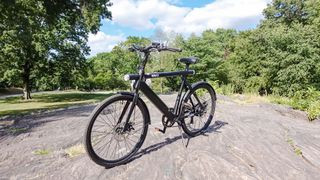 Wing Freedom 2 inexpensive e bike standing in a park setting
Wing Freedom 2 inexpensive e bike standing in a park setting
(Image credit: Tom’s Guide)
3. Wing Freedom 2
A stylish ride equipped with anti-theft features, making it a secure and comfortable inexpensive e bike.
Our in-depth review:
Key Specs
Battery: Panasonic 8.8/10.4/14aH options
Estimated Range: 35-60 miles (battery dependent)
Maximum Assisted Speed: 20 mph
Motor: 36V/550W Bafang rear hub motor
Gearing: 7-speed Shimano Tourney
Weight: 39 pounds
Reasons to Purchase
- Removable battery for convenient charging
- Comfortable and smooth ride quality
- Attractive and modern design
Drawbacks
- Pedal assist and throttle response slightly slow
- Basic display interface
While not a VanMoof, the Wing Freedom 2 undeniably shares visual similarities with the now-discontinued, pricier e-bike brand, positioning it as a compelling and more budget-conscious alternative. Its design philosophy echoes VanMoof’s approach, particularly in the long vertical frame tube concealing internal wiring—until the handlebars, where wires become exposed. However, the Wing Freedom 2 gains an advantage with its removable battery, facilitating easy swapping for continuous power.
The bike incorporates a built-in LCD display showing speed, assist level, and battery status. While functional, it lacks the sophistication and vibrancy of displays found on premium models, opting for a monochrome presentation. To maintain affordability as an inexpensive e bike, it employs a cadence sensor instead of a torque sensor.
This cadence sensor results in a slightly delayed pedal-assist engagement, lagging by a second or two. While still offering a pleasant ride, this characteristic, similar to the Ride1Up Roadster V2, renders it less ideal for steep inclines. Nevertheless, it performed admirably during our urban explorations through Manhattan streets and Central Park’s rolling hills, providing a comfortable and enjoyable experience. For those prioritizing comfort and style in an inexpensive e bike, the Wing Freedom 2 is a strong contender.
Best Adjustable Inexpensive E Bike
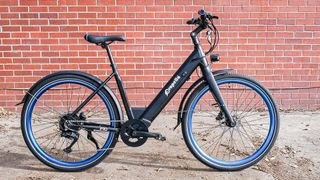 Propella 9S Pro V2 inexpensive e bike parked outdoors in an urban setting
Propella 9S Pro V2 inexpensive e bike parked outdoors in an urban setting
(Image credit: Tom’s Guide)
4. Propella 9S Pro
A robust and affordable e-bike that comfortably accommodates a wide range of rider sizes, making it a versatile inexpensive e bike.
Our expert assessment:
Key Specs
Battery: 36V, 350Wh LG Li-Ion, UL-certified, removable
Estimated Range: Up to 55 miles (maximum)
Maximum Assisted Speed: 20 mph
Motor: MIVICE 350 Watt (500 watt peak) rear hub motor, 40NM torque
Gearing: 9-speed Shimano
Weight: 43.5 pounds
Reasons to Purchase
- Natural and smooth torque sensor pedal assist
- High-quality hydraulic brakes
- Includes fenders and lights
- Integrated battery design
Drawbacks
- Can feel cramped, particularly for taller riders
- No throttle option
While taller cyclists might find the Propella 9S Pro slightly compact, its adjustable handlebars are a significant advantage, allowing smaller riders to more easily customize the bike to their physique. It’s also available in both step-over and step-through frame styles, broadening rider accessibility. This focus on adjustability makes it a standout inexpensive e bike for diverse users.
Beyond adjustability, we found the 9S Pro V2 both functional and enjoyable to ride. Enhancements over the original model include a torque sensor and an updated motor, resulting in much quicker engagement upon pedaling. Its power is also commendable; we successfully tackled steep hills, though a throttle would be a welcome addition for extra bursts of speed. A notable improvement is the integration of the removable battery into the frame, enhancing the bike’s aesthetics and eliminating the rattle present in the original model.
Like its predecessor, the 9S Pro V2 features a headlight (but lacks a taillight) and integrated fenders for protection in wet conditions. It also boasts hydraulic disc brakes, a premium feature rarely seen at this price point, further solidifying its position as a high-value inexpensive e bike.
Best Inexpensive Folding E Bike
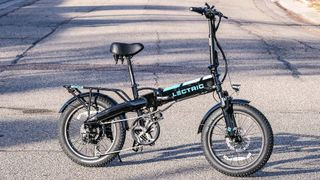 Lectric xp 3.0 inexpensive folding e bike folded for storage
Lectric xp 3.0 inexpensive folding e bike folded for storage
(Image credit: Future)
5. Lectric XP 3.0
The top inexpensive folding electric bike currently available.
Our comprehensive review:
Key Specs
Battery: Lithium-Ion 48V, 9.6ah
Maximum Estimated Range: 45+ miles
Maximum Assisted Speed: 20 mph (class 2); 28 mph (class 3 via display setting)
Motor: 500W (1000W+ peak) brushless geared rear hub, 5 pedal-assist levels; class 2 and 3 capable
Gearing: 7-speed Shimano
Weight: 64 pounds
Reasons to Purchase
- Powerful motor with rapid engagement
- Fun and comfortable riding experience
- Wide array of accessory options
Drawbacks
- Suspension fork feels unnecessary and somewhat bulky
- Folding/unfolding process could be more streamlined
Best foldable electric bikes are ideal for those needing compact transport for trains, buses, or limited storage spaces. However, leading folding e-bikes like Brompton and GoCycle often exceed $3,000, making them financially prohibitive for many.
The Lectric XP 3.0 offers a cost-effective solution for these riders. This folding model starts around $1,000 and includes a suspension fork (which we deemed unnecessary), large 3-inch tires, numerous mounts for accessories, front and rear lights, and hydraulic disc brakes. It delivered a delightful ride, especially when using the throttle, and its extended range ensured longer intervals between charges. For its combination of features and price, it’s a leading inexpensive e bike in the folding category.
The primary downside is the XP 3.0’s substantial 64-pound weight, more than double that of some folding bikes, potentially challenging stair navigation. The folding mechanism, while functional, could be more refined for smoother operation. While a 5’11” rider found the size ideal, a taller 6’5″ rider felt somewhat cramped. Despite these minor drawbacks, its performance and affordability make it a compelling choice for an inexpensive folding e bike.
Best Inexpensive E Bike for Long Distances
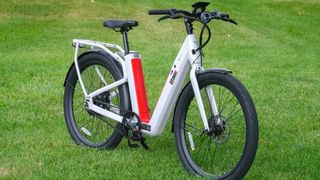 NIU BQi-C3 Pro E-bike in a neutral outdoor setting
NIU BQi-C3 Pro E-bike in a neutral outdoor setting
(Image credit: Tom’s Guide)
6. NIU BQi-C3 Pro
The top inexpensive e bike for extended range and long-distance travel.
Our detailed analysis:
Key Specs
Battery: Dual 48V, 20Ah removable batteries
Maximum Estimated Range: 90 miles
Maximum Assisted Speed: 20 mph
Motor: 500W (750W max) rear hub motor, 45Nm torque
Gearing: N/A (Single Speed with Belt Drive)
Weight: 70.5 pounds
Reasons to Purchase
- Powerful and responsive motor
- Dual battery system for exceptional range
- Deep step-through frame suitable for various rider heights
Drawbacks
- Drivetrain could benefit from more gears
- Heavy for its class
Range limitation is a common compromise in many electric bikes, budget or premium. Higher pedal assist usage inevitably leads to quicker battery depletion. The NIU BQi-C3 Pro excels as the best inexpensive e bike for range anxiety, incorporating two batteries providing up to 90 miles on a single charge. Our testing largely validated this impressive claim, making it ideal for long commutes or recreational rides.
Beyond its endurance, the BQi-C3 Pro offers numerous appealing features for its price. It features a carbon belt drive, which is quieter, more durable, and requires less maintenance than traditional chains. Additional features include mechanical disc brakes, front and rear lights, and an integrated rear rack. The step-through frame design accommodated both a 5′ 11″ and 5′ 3″ rider with ease, enhancing its accessibility as an inexpensive e bike.
The primary drawback is its weight – 70.5 pounds, largely attributable to the dual batteries. However, the 500W motor’s pedal assist proved more than capable of propelling us effectively. While the BQi-C3’s standard price is $2,199, frequent sales often reduce it to as low as $1,299. Therefore, waiting for a discount is advisable to maximize value on this long-range inexpensive e bike.
Other Inexpensive E Bikes We Tested
Why Trust Tom’s Guide? Our team of writers and editors dedicates significant time to evaluating and reviewing products, services, and apps to identify the best options for consumers. Learn more about our testing and rating methodologies.
If the above selections don’t perfectly align with your needs, we’ve tested many more budget electric bikes that didn’t make the main list but are still worth considering as inexpensive e bikes. Here are a couple more options that offer good value:
Swytch Go: For those already owning a traditional bicycle, purchasing a dedicated e-bike might seem unnecessary. The Swytch Go kit offers an alternative: electrifying your existing bike for as little as $349. While performance won’t match a purpose-built electric bike, it’s a refined and inexpensive solution for reducing cost and effort. Read our full Swytch Go review
Swytch Go: If you already have a manual bike, consider this kit to convert it to electric for budget-friendly e-biking starting at $349. It’s a cost-effective way to experience electric assist without buying a whole new bike.
Read our complete Swytch Go review
Choosing the Right Inexpensive E Bike
When shopping for an inexpensive electric bike, especially within a budget of around $1,500, expect some trade-offs compared to premium models costing thousands. However, focusing on key aspects ensures you get the best value.
Motor type is crucial. E-bikes use either cadence or torque sensors for pedal assist. Cadence sensors, detecting crank movement, are more common in inexpensive e bikes due to lower cost. However, they are less responsive than torque sensors, which measure crank force.
Cadence sensors might cause a slight delay in motor engagement after pedaling, which can be noticeable. If you live in a hilly area, avoid single-speed inexpensive e bikes as hill starts can be challenging without gears.
For online purchases of inexpensive e bikes, thoroughly research build quality through numerous reviews, including expert assessments. Ideally, test ride the bike at a showroom to evaluate its feel and construction firsthand.
Integrated lights are often omitted in inexpensive e bikes to reduce costs. If you plan to ride in low-light conditions, prioritize good lighting, which can be added later with aftermarket best bike lights.
How We Evaluate Inexpensive E Bikes
Our testing process for inexpensive e bikes mirrors our approach for all electric bikes. We conduct standardized tests, including extensive riding, to assess key performance metrics. Comfort is paramount, evaluating seat, handlebars, grips, riding posture, and adjustability – especially seat adjustments.
Assembly ease is considered for models requiring partial assembly, common with inexpensive e bikes. We assess assembly time, instruction clarity, and overall process.
While inexpensive e bikes aren’t expected to match high-end performance, a positive riding experience is essential. Hill-climbing ability and motor responsiveness are tested to gauge pedal-assist effectiveness and engagement speed. Slower engagement in lower-quality models can hinder uphill starts.
Battery drain is monitored under various riding conditions, using pedal assist and throttle (if available), to determine battery performance and range.
Finally, we consider included features like displays, integrated lights, and brakes, factoring these into the overall value proposition relative to price to determine final ratings for each inexpensive e bike.
Frequently Asked Questions about Inexpensive E Bikes
E-bike vs. Electric Bike: Is There a Difference?
“Electric bike” and “e-bike” are interchangeable terms referring to electrically powered bicycles with motors and batteries.
Electric bikes are popular for reducing cycling effort, especially uphill, making them suitable for those wanting to minimize reliance on other transport without strenuous workouts. Commuting or grocery trips become easier with an e-bike. While generally pricier than regular bikes, long-term cost-effectiveness, especially considering commuting savings, can be significant.
“E-bike” emerged as a shortened, more casual term for “electric bike” as they gained mainstream popularity. Thus, both terms are synonymous.
Why Price Variations Exist Among E-bikes?
Generally, higher prices correlate with better components and performance in e-bikes, though high-quality inexpensive e bikes with minor compromises are available.
The motor and battery are primary cost drivers differentiating e-bikes from traditional bikes. These components enable powered assistance, reducing rider effort.
More powerful motors and higher-capacity batteries increase e-bike prices. However, for flat terrain or shorter distances, less powerful motors and smaller batteries in inexpensive e bikes might suffice.
Materials also influence cost. While steel is rarely used exclusively, it’s cheaper than lightweight, durable materials like carbon fiber, which is the most expensive. Aluminum frames are often more affordable than carbon fiber. Accessories and features also contribute to price differences.
Integrated computers or smartphone apps for tracking bike location and battery are common in higher-end models, increasing cost. Inexpensive e bikes typically have fewer of these advanced features to keep prices down.
Do E-bikes Offer Cost Savings?
Whether e-bikes save money depends on individual circumstances and usage patterns.
E-bikes generally have a higher upfront cost than standard bicycles due to motors and batteries. However, inexpensive e bikes can be priced competitively with premium traditional bikes.
Initial costs vary significantly based on power and battery capacity needs. Hilly terrains and longer commutes necessitate more powerful and longer-range e-bikes, increasing initial investment.
Despite higher initial costs, e-bikes can yield savings. Replacing car commutes or short trips with e-bikes reduces per-trip costs compared to car ownership.
E-bikes are significantly lighter than cars, requiring less energy. Electric car owners will find e-bike charging minimal, while gasoline car owners save on fuel costs by switching to an inexpensive e bike for some trips.
Physical Exercise with E-bikes?
E-bikes provide exercise, but less intensely than regular bikes. Motor assistance reduces ride exertion, which is their primary advantage.
While e-bike rides might not feel like intense workouts, replacing car trips with e-biking increases daily physical activity.
Beyond exercise benefits, e-biking offers outdoor time, avoids traffic congestion, and allows leisurely exploration, contributing positively to overall well-being and health.
